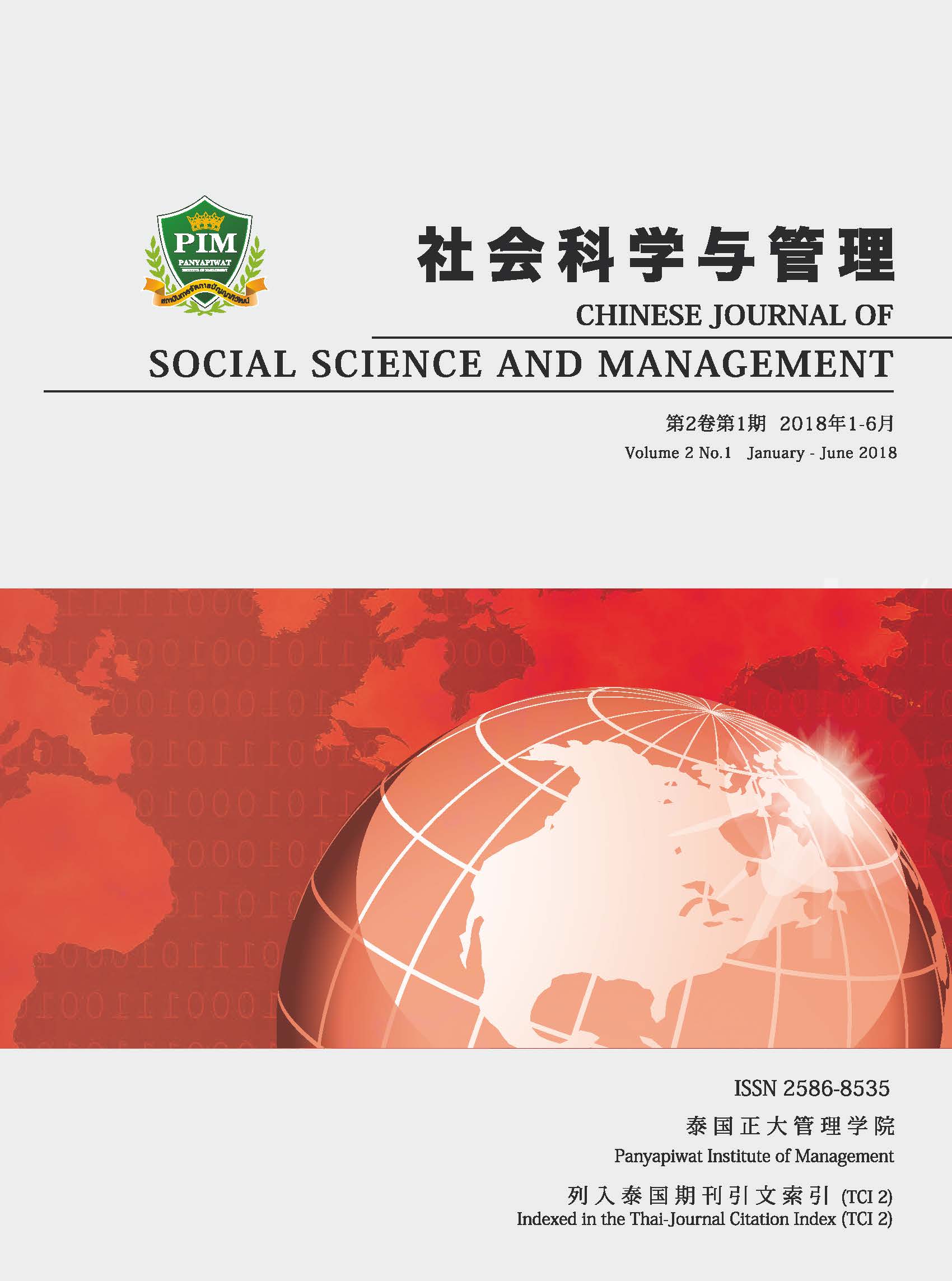THE RESEARCH OF CHINESE USAGE IN COPPER INDUSTRY: A CASE STUDY OF UNITED CO., LTD.
Main Article Content
Abstract
Metal industry has more relative with China which is main of import and export. The metal that
import from China is variety, such as Copper, Aluminum, Zinc, and so on. On the contrary, Metal has
become the product that Thailand can export to China, such as Copper, Aluminum, Gold, Silver and so
on. Those metal products from Thailand export by non–processing metal or processing metal. Chinese
language communication becomes one of the main language recently in metal market which relate to the
business between Thailand and China. The more Chinese communicate, the more benefit occur. Those
benefit point out to the thesis by survey and interview of employees who are able to communicate by
Chinese language at United Co., Ltd. The conclusion of the survey and interview has shown the four main
categories; First, Chinese communication is various in this industry. There are business people who learn
Chinese as a second language. Second, Chinese character is difficult to learn. Third, culture, manner,
social, and familiarity are important to communicate Chinese. Fourth, Chinese communication is wide
usage. United Co., Ltd. sets the Chinese activity that allows employees to develop the level of Chinese
language. However, the problem is found in two cases; First, the employees are difficult to understand
the business manner, culture, and social of Chinese people. Their understanding is not clear which cause
the gap between the cultures. Second, Chinese language is difficult to learn fundamentally. The meaning
and flexible in sentence is quite various and fixed that lead to the difficulty to learn Chinese.
The conclusion of the cause of problem in Chinese communication at metal industry present in
3 solutions, such as, First, the government is supposed to set up the policy to raise the strength of Chinese
education for training people talent. Second, private company need to develop the strength program of
Chinese communication in order to train the people who has talent. Third, the employees need to find
more time to practice Chinese language and to understand Chinese culture, manner, and familiarity.
Article Details
Chinese Journal of Social Science and Management Editorial Division
The Office of Research and Development, Panyapiwat Institute of Management
85/1 Moo 2, Chaengwattana Rd., Bang Talat, Pakkred, Nonthaburi 11120, Thailand
Tel. 02 855 01048 E-mail: cjssm@pim.ac.th
References
Hu, Y. P. (2015). Analysis of Application Skills of Business English in Foreign Trade. China Business & Trade, 8, 83-85. [in Chinese]
Kanchana, S. (2013). A Study on the Schema Structure of Texts of Common Trade Contracts Between China and Thailand. Journal of Minzu University of China.
Keorite, M. & Moubarak, M. (2016). The impacts of China’s FDI on employment in Thailand’s industrial sector: A dynamic VAR (vector auto regression) approach. Journal of Chinese Economic and Foreign Trade Studies, 9(1), 60-84.
Li, J., Zhao R. R., Tian, D. M. & Zhang, Y. J. (2013). Analysis of Factors Affecting China’s Commodity Trade Conditions —— Take Non–ferrous Metals As An Example. Modern Business, 36, 99-101. [in Chinese]
Liu, Y. & Jayanthakumaran, K. (2016). People’s Republic of China (PRC): Thailand Economic Relationship After Signing of Free Trade Agreement in 2005 [M]//Chinese Global Production Networks in ASEAN. Springer International Publishing, 2005, 77-95. [in Chinese]
Luo, J. H. & Lin, C. Q. (2005). Research on Current Situation and Strategy of China’s Nonferrous Metals Import and Export. Mining Technology, 4, 9-11. [in Chinese]
Tong, L. Z. (2013). Analysis on the Characteristics of Nonferrous Metals Trade between China and European Union. World Nonferrous Metals, 11, 58-59. [in Chinese]
Wimonsarawong, B. (2014). China–Thai Trade Development Status and Prospect Analysis. Master’s thesis, Jilin Uniersity.
Yang, Y., Shao Y. M. & Wang, S. Y. (2008). Main problems and countermeasures of comprehensive utilization of nonferrous metal resources in China. Proceedings of the Chinese Academy of Sciences, 23(3), 201-207. [in Chinese]


